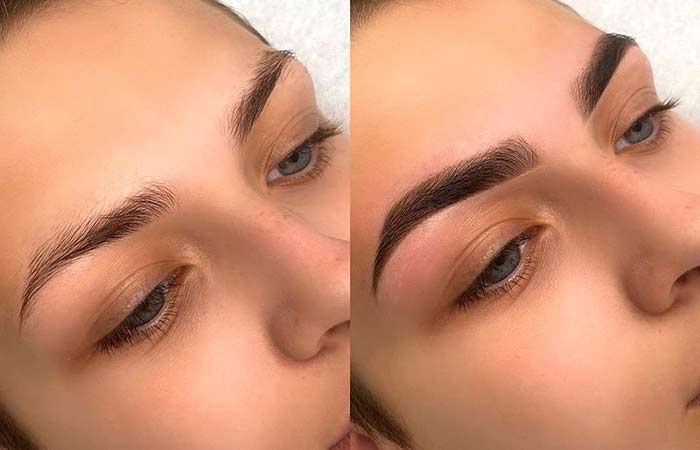Eyebrow hair lasts for about 3 5 months before it sheds and new hair grows in its place

Eyebrow Hair: Shedding and Regrowth Explained
Have you ever wondered why your eyebrow hairs seem to disappear after a few months? Well, you’re not alone! Eyebrow hair is known to have a relatively short lifespan of about 3-5 months before it sheds and new hair starts growing in its place. In this article, we’ll delve deeper into this fascinating process and explore the factors that contribute to eyebrow hair shedding and regrowth.
Understanding Eyebrow Hair Growth Cycle
Before we dive into the shedding and regrowth phase, let’s familiarize ourselves with the natural growth cycle of eyebrow hair. Similar to the hair on our heads, eyebrow hair goes through a continuous cycle of growth, regression, and shedding.
The growth cycle consists of three distinct phases:
Anagen Phase: This is the active growth phase, where the hair follicle produces new cells and pushes out the hair shaft. During this phase, eyebrow hair grows at a steady pace.
Catagen Phase: The catagen phase is a short transition period that signals the end of the growth phase. Hair follicles shrink and detach from the blood supply, causing the hair to stop growing.
Telogen Phase: The telogen phase, also known as the resting phase, is when the hair follicle remains dormant. At this stage, the hair is fully formed but not actively growing. Eventually, the old hair sheds to make room for new hair.
Why do Eyebrow Hairs Shed?
Several factors can lead to the shedding of eyebrow hairs, and it’s important to understand them to maintain healthy and full-looking eyebrows.
1. Natural Shedding: Just like any other hair on our bodies, eyebrow hair goes through a natural shedding process. The duration of the telogen phase, which is approximately 3-5 months, determines when the hair will shed and new hair will start growing.
2. Aging and Hormonal Changes: As we age, our hormone levels fluctuate. Hormonal imbalances or changes, such as those experienced during pregnancy or menopause, can impact the growth cycle of eyebrow hair. Consequently, hormonal shifts can accelerate hair shedding or slow down the regrowth process.
3. Overplucking and Grooming: Excessive plucking, waxing, or threading of eyebrows can damage the hair follicles, leading to hair breakage and thinning. It’s important to be gentle when grooming your eyebrows to avoid causing long-term damage.
The Regrowth Process
After shedding, the eyebrow hair follicles enter the anagen phase once again, initiating the regrowth process. As new cells are produced in the hair follicles, they push out the old hair and create space for the new hair to grow.
It’s important to note that eyebrow hair regrowth may take time and vary from person to person. Factors such as genetics, overall health, and lifestyle choices can influence the speed and thickness of regrowth. Providing your body with a balanced diet and keeping your eyebrows nourished can promote healthier and more robust regrowth.
Expert Tips to Maintain Healthy Eyebrows
To keep your eyebrows looking their best and promote healthy hair growth, here are some expert tips to incorporate into your grooming routine:
- Avoid excessive plucking or grooming, allowing your eyebrows to follow their natural growth pattern.
- Use a soft eyebrow brush to stimulate blood circulation and distribute natural oils for healthier hair follicles.
- Consider applying nutrient-rich eyebrow serums or oils to nourish and condition the hair follicles.
- Consult with a professional if you have concerns about thinning eyebrows or irregular hair growth, as they can provide tailored advice and treatments.


Understanding the natural shedding and regrowth process of eyebrow hair can help you maintain fuller, healthier, and more defined eyebrows. Remember, patience and consistent care are key when it comes to achieving your desired eyebrow goals.
Tags
Share
Related Posts
Quick Links
Legal Stuff

